Mergers and acquisitions are notoriously complicated, clumsy, and fraught with bad feelings when they’re not executed carefully and strategically. Often, leaders fail to communicate, which derails productivity and leaves employees worried about their jobs. Companies also tend to struggle to manage customer integration, branding, and media relations during the transition.
Last year, Apple shocked the world when it acquired Beats Music and Beats Electronics for $3 billion. Along with the fanfare that accompanies any Apple announcement, analysts were scratching their heads as to why Apple would buy Beats–a company that’s been criticized for producing flashy headphones with subpar sound that could conflict with the sleek, functional Apple brand.
But Tim Cook and his team knew what they were doing, and the acquisition has progressed relatively smoothly–though the integration and results have come about a bit more slowly than anticipated.
Here are a few lessons you can learn from this high-profile deal to make your own merger or acquisition as seamless as possible:
1. Look for the Ultimate Win-Win Scenario
When considering a business move as significant as a merger or an acquisition, look for a win-win situation. The ideal scenario is one in which both sides stand to gain significantly.
In the case of the Apple-Beats acquisition, Apple needed a music streaming service so iTunes could compete with Spotify and Google Play. Beats also brought “street cred” and the opportunity to expand the company’s existing product line. Meanwhile, Beats needed more market share.
It didn’t hurt that Apple and Jimmy Iovine have a history. Iovine stated publicly that he always felt like Beats belonged with Apple because of its “deep commitment to music fans, artists, songwriters, and the music industry.”
2. Choose the Best Structure
When building the ideal scenario, determine whether it would be better to keep the companies running as separate entities or integrate them under one umbrella. Ensure that you get input and buy-in from both sides so it doesn’t feel like one company is steamrolling the other.
Part of the reason the Apple-Beats acquisition has been so straightforward is that Beats effectively shut down and has been fully integrated into iTunes. To accomplish this, both companies needed to work together to place the best Beats employees in key roles at Apple.
3. Get All Leaders Involved
For a change as important as an acquisition or a merger, senior executives in both companies should be active participants in the process. The CEO, COO, and relevant department heads all play a role. For example, the CEOs and heads of PR will want to work together to craft a unified company message and manage the media strategically and effectively.
4. Identify Roles for Key Players
One of the most difficult aspects of mergers and acquisitions is downsizing. When management roles overlap, you’ll need to restructure or consider layoffs. Leaders from both teams should put forth their top candidates and negotiate to determine who will fill specific roles. You’ll have to come to terms with the fact that some important figures may have to leave the new company with a severance package.
In the Apple-Beats deal, Apple was able to retain and integrate Beats’ crucial players into the iTunes team. Iovine and Dr. Dre now hold senior roles at Apple, and others, including Ian Rogers, Trent Reznor, and Bozoma Saint John, have stayed on following the acquisition.
5. Don’t Forget About Culture
The need to integrate two different corporate cultures is often overlooked, which has caused challenges on the other side of the financial merger and acquisition between Apple and Beats. These nuances must be considered early on. If cultural integration isn’t properly addressed, it can not only hinder morale, but it can also lead to plummeting productivity, higher turnover rates, and sabotage.
This is where a cross-functional integration team can influence the outcome. This team can evaluate the cultural differences between the two companies and tackle them directly to mitigate challenges and avoid surprises. This way, you’re not just throwing new employees into an unfamiliar environment and expecting them to know the rules, which are sometimes unspoken. This is subtle but incredibly significant.
While merging or acquiring, it’s important to remember that the integration could take longer than anticipated. The transition may not be seamless or swift, but by crafting a deal that makes strategic sense for both parties, communicating openly, and working to retain key players, you’ll be much more likely to succeed as a united force.
This article was previously published in Inc.com
To your best success,
Kelli Richards, CEO of the All Access Group, LLC
PS: Subscribe to my FREE All Access Group Newsletter https://bit.ly/AAGNewletter
PSS: Listen to an entire library of intimate discussions with industry visionaries https://bit.ly/AllAccessPodcastSeries (Priceless)



